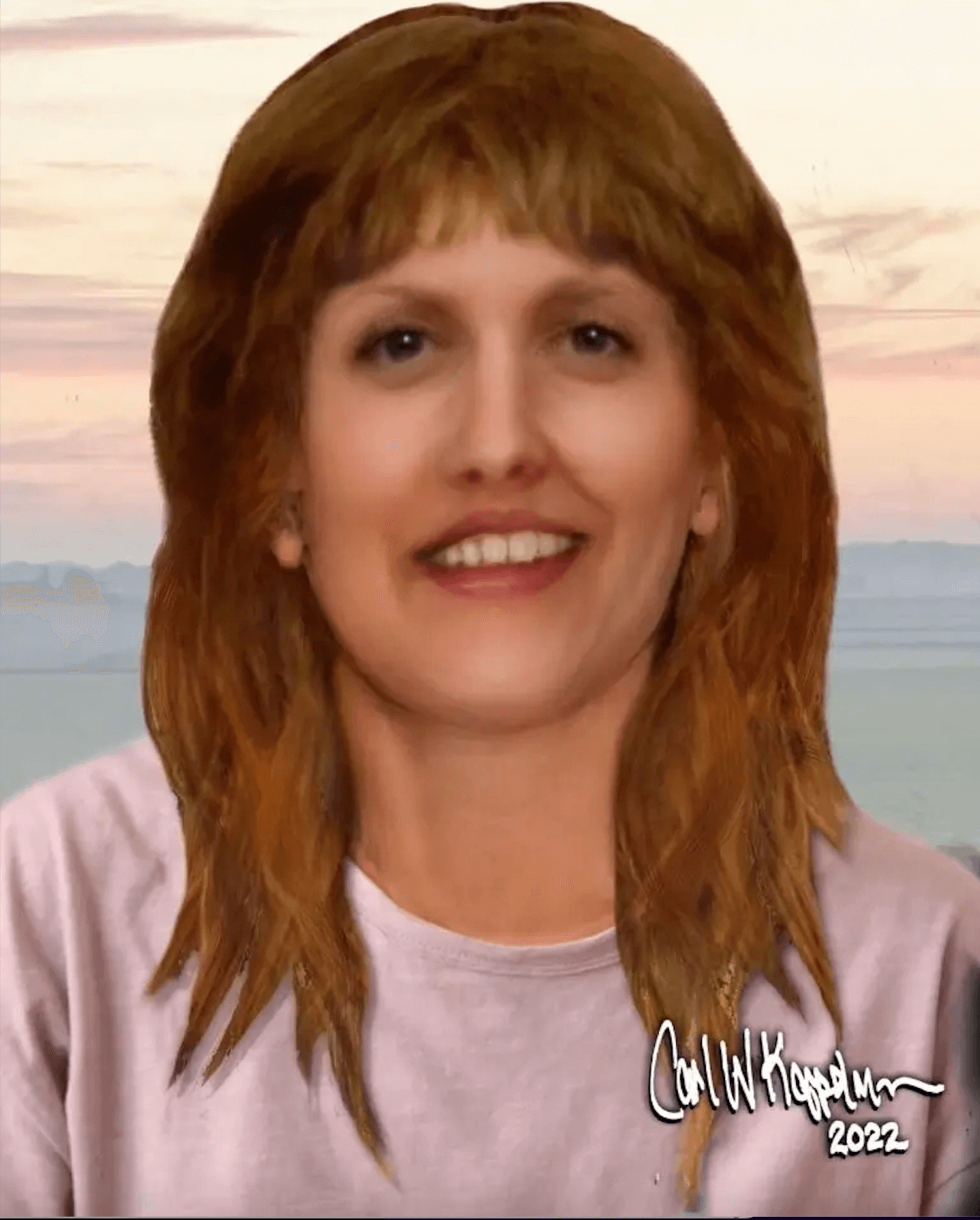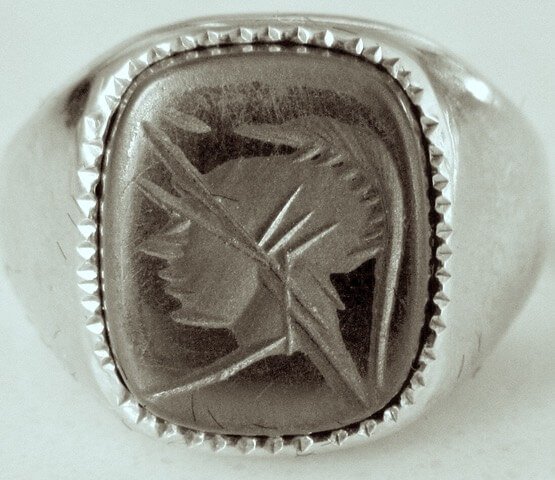Identifying Susan Lund with guest Laurah Norton
Who killed Susan Lund?
25-year-old Susan Lund went missing on December 24, 1992 after reportedly leaving her home in Clarksville, Tennessee around 7:30pm to go to the grocery store. She never returned home. A month or so later, her remains were located 300 miles away in Wayne Fitzgerrell State Park in Ina, Illinois, but weren’t connected to her. She would remain unidentified for 30 years, and was known only as Ina Jane Doe. In 2022, Ina Jane Doe was finally identified as Susan. Her homicide remains unsolved.
Download Susan Lund’s reward poster to share on social media. If you’re in the Clarksville, TN area, consider printing out copies to share at local businesses, libraries, and high traffic areas.
If you have any information about Susan Lund’s murder or her whereabouts on December 24, 1992, please contact Detective Captain Bobby Wallace at the Jefferson County Sheriff's Office at (618) 244-8004. To remain anonymous, call the Clarksville Montgomery County Crime Stoppers at (618) 242-TIPS. Any tips that lead to a resolution are eligible for a $10,000 reward that doesn’t expire.
Lay Them to Rest
Lay Them to Rest is the debut non-fiction true crime book by Laurah Norton that takes a fascinating deep dive into the dark world of forensic science, and a personal look at the experts behind the scenes working to solve decades old unidentified persons cases. The book focuses on the work done to identify Ina Jane Doe as Susan Lund. I asked Laurah what inspired the book:
Laurah: “I've been approached to write a book a few different times, pre podcasting... and it all ended up kind of coming together, where I was working on several different cases with my friend and colleague, Dr. Amy Michael. She's an assistant professor of anthropology at University of New Hampshire, and a biological anthropologist that specializes in forensic anthropology...
I wanted to give people the chance to understand forensic science in a really practical, accessible way and then see it applied to a real case. And the case of Ina Jane Doe—as she was known then—who was found murdered in Ina, Illinois in 1993, just kind of came to us from Jefferson County Sheriff's Office.
The third investigator who'd been on the case was about to retire and he wanted to see the case solved, so he was really interested in anything we could come up with that might be a new, fresh look at her case, so it just kind of fell into place to follow along right at the time I was really beginning the serious work on the book.”
Ina Jane Doe
On January 27, 1993, the head of a deceased woman was discovered by two girls in a wooded area of Wayne Fitzgerrell State Park, in Ina, IL. The rest of her remains weren’t recovered, and the medical examiner wasn’t able to determine a cause of death. Investigators weren’t able to identify her, so she was named Ina Jane Doe.
Both a forensic sketch and a clay bust of Ina Jane Doe was made, but nobody recognized her. In 2021, investigators needed a fresh look at at their 1993 Ina Jane Doe Case…
Laurah: “I felt like there were so many particularities that what her case was really waiting for were just updates. She had really particular forensic art. She had a sketch and she had a forensic bust that had been circulating for over almost 30 years, and no one had recognized her. So that let me know that if someone was going to recognize her, they would have at this point.
This was the kind of case that Amy is always looking for most, which is a case that probably needs reanalysis. Amy's a big believer in skeletal reanalysis.
...She wanted to do a new skeletal analysis, and [get her a new forensic sketch]. Forensic art has developed so much [as has] DNA. Not only do we have STR DNA, we have SNP (snip) DNA, which is what's used for forensic investigative genetic genealogy.
Once we had the DNA profile from Astrea Forensic Labs, I knew she was going to be identified.
The genealogists at Redgrave Research work in a collaborative team. Lee Redgrave and Anthony Redgrave, with the team leader, Victor Veltstra, and several student interns.
They began working once the DNA was uploaded to GEDmatch, and I know that they're fast, but I was [thinking] like a day or two. So I [went to bed when they were working that night] and thought, “I'll wake up really early and they're going to be pretty far along and I can jump in and start helping.” Well, when I woke up, I opened up their discord group and I just saw a picture of this young, beautiful red-haired woman staring back at me.
It was the senior yearbook photo of a woman named Susan Minard Lund.
Ina Jane Doe had been estimated to be between 35 to 55 years old, and most experts were thinking she was about 45, but it turned out that she was a 25-year-old mother who had been living in Tennessee when she disappeared.”
Susan Minard Lund
Laurah: “Sue was just 25 years old, and she had three young children under the age of six. Her youngest being just about 18 months old at the time of her disappearance. She was originally from Indiana, and she'd lived there for pretty much all of her life until her husband, who was in the military, and he'd been stationed in Germany until he'd recently come back and he'd been moved to Fort Campbell, which sits on the Kentucky-Tennessee line.
They'd moved down to Tennessee where their housing was, so she was a recent transplant. She was from a pretty big family, so she was a little lonely in Tennessee after kind of leaving that area in Indiana with her big family.
But she was also happy to be spending so much time with her children because when she was living in Indiana, she'd been living with her sister, Pam (who was also her best friend), and they were both working and trading off on childcare because her husband was overseas and they were trying to make ends meet.
When Sue got to Tennessee, she wasn't working because she was watching the kids. So, for kind of the first time, she got to spend all day with her kids, and just kind of watch them grow up. And both her sisters remember her saying how wonderful that was, because she got to watch all the tiny changes. So that was something that she was really enjoying that was really special to her in the time before her disappearance.
She wasn’t having a super great time in Tennessee, but she was adjusting. What was hard was that they just moved into this military off-base housing and they didn't have a phone or a car.
They were going to have a phone installed, but if she wanted to do something, she had to walk. Can you imagine with three little kids? That was kind of hard.
Susan disappears
Laurah: “We found out that she actually disappeared on December 24th, 1992. Allegedly (and I say allegedly just because there's so many unknowns in this case), she'd gone out to pick up a last-minute bit of groceries for Christmas Eve and just never came home.”
Kristen: “That was something that I found a little bit surprising because the grocery store was a few miles away, correct?”
Laurah: “It sure was. Yeah, the grocery store was a few miles away and it was cold. Also, the grocery store was closed. There's no way that she would know that necessarily. Except that back in the day... grocery stores did close for the holidays, and you were kind of in trouble unless you had a Walmart to go to if you needed something. I've always been confused as to why she would have gone out.
She'd even talked to one of her sisters and said she had everything. But, I mean, people do change their minds. There's also the possibility there was a convenience store near their house. She could have decided to go there. The story is that she wanted to make a pie last minute.
There's just so many unknowns in this case. But one of the biggest unknowns is that she Left on December 24th, and her remains weren't discovered until January 27th, and this is Clarksville, Tennessee to Ina, Illinois, which is about 180 miles. So, that's quite a distance of time and place, and there's really no answers as to what happened in the interim.”
What Sue's family want people to know
Laurah: When we were looking to confirm Sue’s identity and found her family, her sisters had been trading back and forth pictures of Jane Does as recently as a few weeks before she was identified. So, they were still looking for her.
I think that for Sue's sisters, the first thing they wanted people to know was, of course, that they'd always known that she'd never leave her children.
That was something that her children had to deal with for 30 years. Her daughter, Crystal, who is one of the main advocates in her case now, her middle child, grew up thinking that her mother had left her. [She was] told by some people that her mother had voluntarily left her and chosen to go have another life without her, which is incredibly painful and traumatizing to a child.
[Hearing the news that Susan was identified was] incredibly sad news to have, but also, it was something that they'd always known. So having that confirmation was fulfilling in a way, because they could finally say it: ‘We knew that our sister never abandoned her children, that she loved her children, and now the world knows it, too.’ So, that was one of the first things they wanted people to know before anything else.”
What do investigators need to solve Sue’s murder?
Laurah: “This is an active homicide investigation, and there's a $10,000 reward in her case that does not expire that’s been put up by myself and by Dr. Amy Michael leading to an arrest or conviction in her homicide. We're really hoping that people will share this. We're really trying to get people who especially may have lived in Tennessee, who may have any information, who may have seen her on the night of her disappearance—we're trying to get that information out to them.”
The importance of sharing Doe cases
In November 2023, a major update was announced in the case of Christmas Doe, a case that was covered on The Fall Line (along with another child case that’s now solved called Dennis Doe) and written about pre-identification in Lay Them to Rest, which was published in October 2023.
Laurah: “Christmas Doe was a very small child who was found in 1988 in Ware County, Georgia. She's called Christmas Doe because she was found around Christmas. She's also wearing Christmas colors. She was found in a really disturbing way... she'd been encased in concrete and put inside of an old television cabinet, and found out in the woods in rural Georgia. For years, there was very little information available on her case.
Recently, they had been asking for coverage (especially in the Albany, Georgia area), and come to find out that, someone had called in with a tip late last year and connected Christmas Doe to Albany, Georgia, where she'd lived with her mother and her mother's boyfriend.
Her name is Kenyatta Odom, her nickname was Kiki. She was 5 years old. Unfortunately, as is in the case of many unidentified children, she was allegedly killed by her caregivers, which is something that we do see a lot.
This is a case that I have followed and hoped would be solved for the past four years. So, to see it solved this week (November 2023)— a case 35 years old—I think just points to the fact that I keep pushing this importance of sharing doe cases across the board, and not just on social media. Mailers, television, and places where older people can see them is so vital because this case was not solved with DNA. It was solved with a tip. The same thing with Dennis Doe and William Deshaun Hamilton. His case was not solved with DNA. It was solved with a tip.
Tips from older people who remembered a child going missing, and thought the story that was given by the parents didn't quite match up in both cases.”
Kristen: “That's really, really, heartbreaking, but also really incredible that finally some sort of a resolution is coming in this case and she can get justice. She deserves that.”
This text has been adapted from the Murder, She Told podcast episode, Identifying Susan Lund. To hear the full interview with Laurah Norton and more on Susan Lund, find Murder, She Told on your favorite podcast platform and read Laurah’s book, Lay Them to Rest.
Laurah Norton is the author of Lay Them to Rest, and the host of The Fall Line true crime podcast and One Strange Thing podcast. She is also a writer and researcher, and was an English professor for more than a decade at Georgia State University in Atlanta, Georgia. Her passion lies in shedding new light on unidentified persons and unsolved cases that have received little to no media attention.
Click here to support Murder, She Told.
Connect with Murder, She Told on:
Instagram: @murdershetoldpodcast
Facebook: /mstpodcast
TikTok: @murdershetold
Laurah Norton, author of Lay Them to Rest
Original composite sketch of Ina Jane Doe
Updated 2022 composite of Ina Jane Doe post skeletal reanalysis
Susan Lund and her mother
Laurah Norton, Dr. Amy Michael, and the team at Redgrave Research
Also mentioned in the episode…
Kenyatta Odom, identified as Christmas Doe in November 2023
William DeShawn Hamilton, identified as Dennis Doe in 2022
Similar ring found on Nashville John Doe (May 1988) that Laurah is working to help identify
Sources For This Episode
Lay Them to Rest by Laurah Norton
Most photos contributed from Laurah Norton
Additional photos from WPSD Local 6 Newscast
Credits
Created, research, interview, and editing by Kristen Seavey














